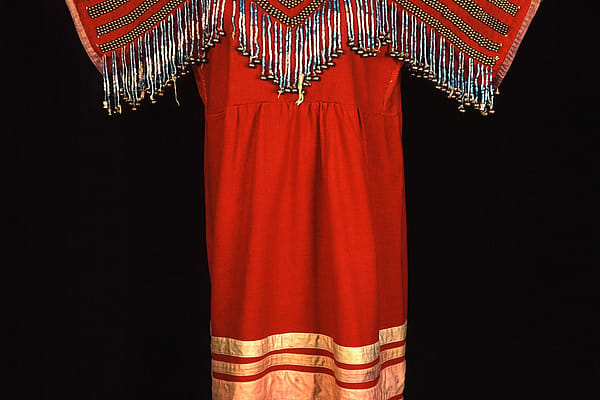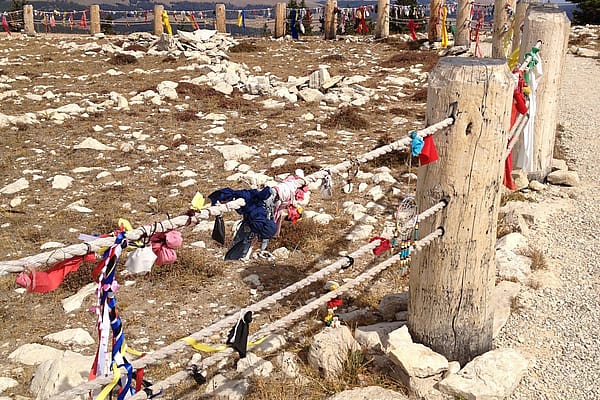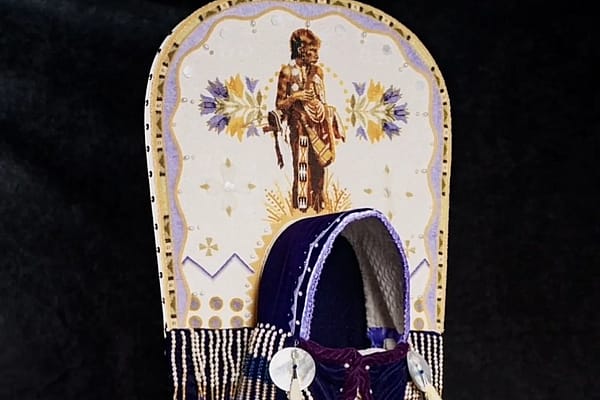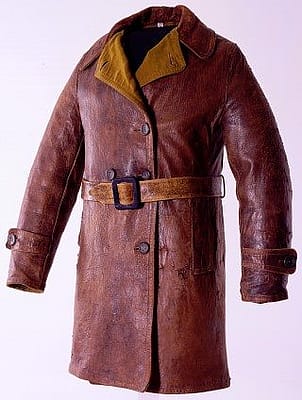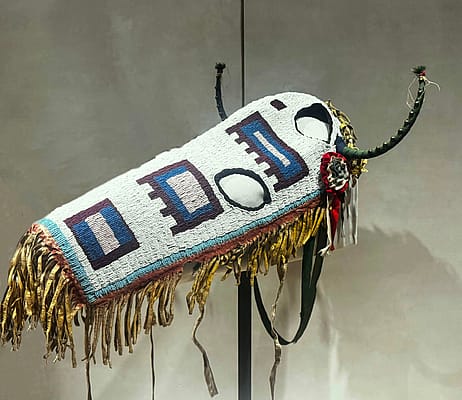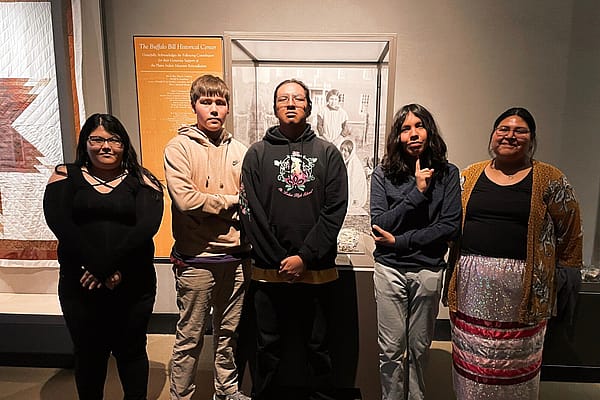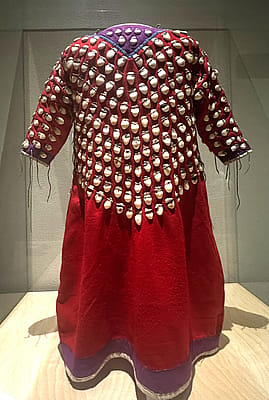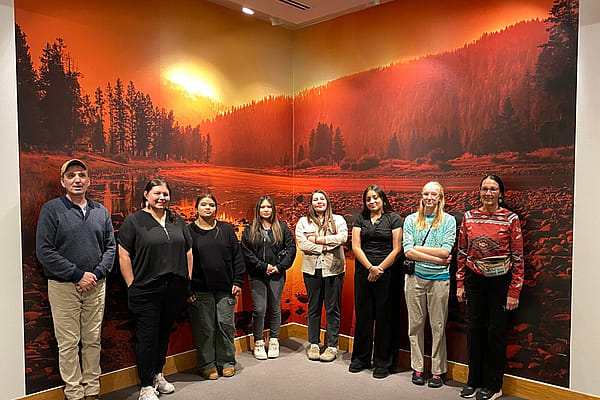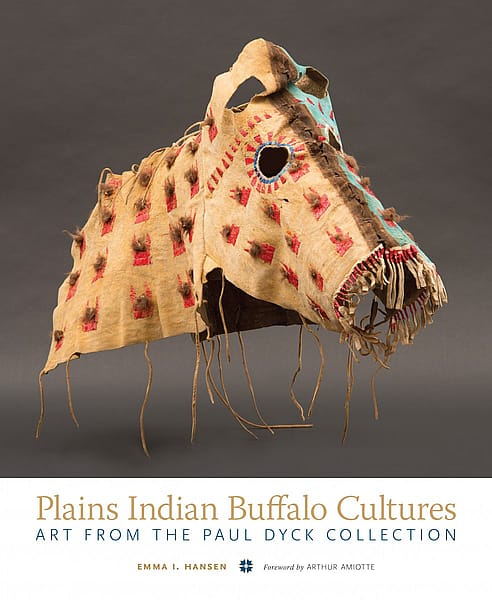
“Plains Indian Buffalo Cultures: Art from the Paul Dyck Collection” by Emma I. Hansen
BOOK NEWS FOR IMMEDIATE RELEASE:
Plains Indian Buffalo Cultures: Art from the Paul Dyck Collection
By Emma I. Hansen
Emma I. Hansen signs copies of her highly anticipated book on Thursday, June 14, 4–6 p.m. at the Buffalo Bill Center of the West.
Copies are available for purchase on-site at the museum store, Legend’s Bookstore in Cody, Wyoming, and Amazon.com.
Hansen explains: “A highlight of my experience as Curator, and later, Senior Curator, of the Plains Indian Museum of the Buffalo Bill Center of the West was the acquisition of and opportunity to research and interpret the renowned Paul Dyck Plains Indian Buffalo Culture Collection. The Paul Dyck Collection had been characterized by Native American art specialists as one of the most comprehensive privately held assemblages of Plains Indian artistry and related historical materials documenting the lives and cultures of the Native people of the Great Plains.”
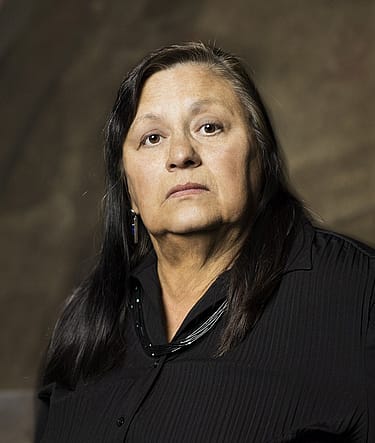
Great Plains Indian Cultures: Over the course of his career, artist Paul Dyck (1917–2006) assembled more than 2,000 nineteenth-century artworks created by the buffalo-hunting peoples of the Great Plains. Only with its acquisition by the Plains Indian Museum at the Buffalo Bill Center of the West has this legendary collection become available to the general public. Plains Indian Buffalo Cultures allows readers, for the first time, to experience the artistry and diversity of the Paul Dyck Collection—and the cultures it represents.
Richly illustrated with more than 160 color photographs and historical images, this book showcases a wide array of masterworks created by members of the Crow, Pawnee, Lakota, Arapaho, Cheyenne, Shoshone, Hidatsa, Mandan, Arikara, Dakota, Kiowa, Comanche, Blackfoot, Otoe, Nez Perce, and other Native groups.
Author Emma I. Hansen provides an overview of Dyck’s collection, analyzing its representations of Native life and heritage alongside the artist-collector’s desire to assemble the finest examples of nineteenth-century Plains Indian arts available to him. His collection invites discussion of Great Plains warrior traditions, women’s artistry, symbols of leadership, and ceremonial arts and their enduring cultural importance for Native communities. A foreword by Arthur Amiotte provides further context regarding the collection’s inception and its significance for present-day Native scholars.
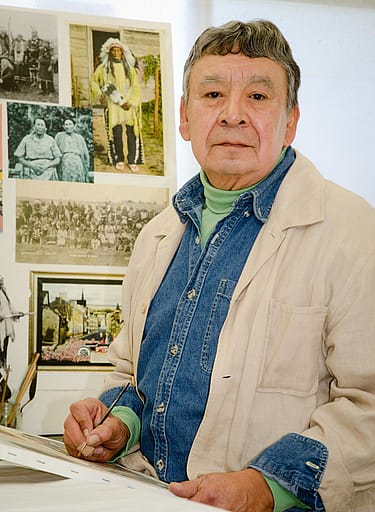
From hide clothing, bear claw necklaces, and shields to buffalo robes, tipis, and decorative equipment made for prized horses, the artworks in the Paul Dyck Collection provide a firsthand glimpse into the traditions, adaptations, and innovations of Great Plains Indian cultures.
The Paul Dyck Plains Indian Buffalo Culture Collection was acquired through the generosity of the Dyck family and additional gifts of the Nielson family and the estate of Margaret S. Coe. Unless otherwise noted, all of the works featured in this book are from the Paul Dyck Plains Indian Buffalo Culture Collection at the Plains Indian Museum of the Buffalo Bill Center of the West, Cody, Wyoming.
Written By
Hunter Old Elk
Hunter Old Elk (Crow & Yakama) of the Plains Indian Museum at the Buffalo Bill Center of the West, grew up on the Crow Indian Reservation in Southeastern Montana. Old Elk earned a bachelor's degree in art with a focus on Native American history at Mount St. Mary’s University in Maryland. Old Elk uses museum engagement through object curation, exhibition development, social media, and education to explore the complexities of historic and contemporary Indigenous culture. She is especially inspired by the stories of Native American women who lived and thrived on the Plains. Facebook/ Instagram: @plainsindianmuseum

